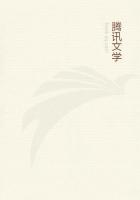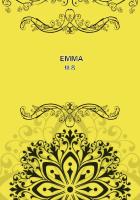The year 1548 opened ominously for the Catholic party. Preachers, licensed by the Archbishop of Canterbury and protected openly by the court, delivered wild harangues against Catholic doctrines and practices. Pamphlets, for the most part translations of heretical works published in Germany or Switzerland attacking the Mass, Transubstantiation, and the Real Presence, were sold publicly in the market places without any interference from the authorities. In January a royal proclamation was issued enjoining the observance of the Lenten fasts, but ten days later an order was made forbidding the use of candles on Candlemas Day, of ashes on Ash Wednesday, or of palms on Palm Sunday. This was followed quickly by a command for the removal of all statues, images, pictures, etc. from the churches. The use of Communion under both kinds was to come into force at Easter 1548, and to prepare for this a royal proclamation was set forth ****** obligatory the English /Order for Communion/. As the new rite regarded only the Communion of the laity, the Latin Mass was to remain in use as heretofore "without any varying of any rite or ceremony."[51] The clergy were commanded to announce the Sunday on which they proposed to distribute Communion to their flocks. After the priest had himself communicated, the communicants, who did not wish to go to confession, should make a general confession, and should receive Communion under both kinds, the whole service being completed by the usual blessing. This was a clever trick to prepare the way for still greater changes. Owing to the retention of the Latin Mass it was expected that the new Communion service would not lead to serious trouble, while at the same time it would accustom the people to portions of the Mass being read in English, and would imply both that auricular confession was unnecessary and that Mass without Communion of the laity was of no particular importance. The council anticipated that the Communion service would prove unacceptable to many of the clergy, and their anticipations were fulfilled, though, as shall be seen, they adopted a novel method of allaying the trouble.
Bishop Gardiner, who had been kept in prison while Parliament was in session lest his presence in the Upper House might lead to trouble, was released in January 1548, but in May a peremptory summons was issued commanding him to come to London without delay. He obeyed, and for some time negotiations were carried on, until at last he was ordered to preach against the Pope, monasteries, confession, and in favour of the English Communion service (29th June). He was urged not to treat of the sacrifice of the Mass, or of Transubstantiation, and warned of the serious consequences that might ensue in case he disobeyed; but Gardiner was a man who could not be deterred by such means from speaking his mind, and as a consequence he was again placed under arrest, and sent as a prisoner to the Tower. Cranmer, who had rejected the authority of the Pope because he was a foreigner, finding that he could get no support from the clergy or the universities--for in spite of everything that had taken place the theology of Oxford and Cambridge was still frankly conservative--invited preachers to come from abroad to assist in weaning the English nation from the Catholic faith. The men who responded to his call formed a motley crowd. They were Germans like Martin Bucer and Paul ***ius, Italian apostate friars like Peter Martyr (Pietro Martire Vermigli) and Ochino, Frenchmen like Jean Véron, Poles like John à Lasco, Belgians like Charles Utenhove, à Lasco's disciple, and Jews like Emmanuel Tremellius.[52] The order for the total removal of images and for the Communion service in English led to serious disturbances even in the London churches, where the new opinions should have found the strongest support, and confusion reigned throughout the country.
The Communion service in England was, however, only the prelude to the total abolition of the Mass. Early in 1548 a series of questions had been addressed by Cranmer to the bishops regarding the value of the Mass as a religious service apart from the Communion.[53] The bishops were asked to say also whether private Masses offered for the living and the dead should continue to be celebrated, and what language should be used. In their replies Cranmer and Ridley favoured innovation, and were supported generally by Holbeach, Barlow, Cox, and Taylor. One, Bishop Goodrich of Ely, expressed his willingness to accept whatever might be enjoined, while the rest of the bishops adopted a conservative attitude. But whatever might be the opinions of the bishops generally the Protector and Cranmer were determined to procure the abolition of the Mass. Later in the year an assembly of the bishops was held to discuss the new English service to be substituted in its place. It is difficult to determine what precisely was done at this meeting. From the discussions which took place afterwards in the House of Lords it is clear that the bishops could not agree upon the Eucharist, that all with one exception signed their names to a rough draft drawn up on the understanding that they did not commit themselves thereby to Cranmer's views, and that the episcopal report was changed by some authority before it was presented to Parliament, especially by the omission of the word "oblation" in regard to the Mass. That the Book of Common Prayer as such was ever submitted to or approved by a formal convocation of the clergy cannot be shown.[54]














